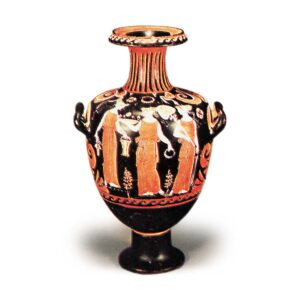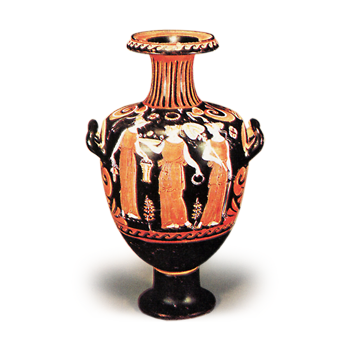
Akae-shiki is the opposite of kuro-e-shiki, a technique in which black paint is applied to a red ground to bring out figures and other objects. However, the eyes and nose are painted in black. This technique became popular in Attica from the end of the 6th century BC. This technique enabled more precise depiction of human figures. In black painting, the details that are represented by inscriptions are represented by black lines drawn with a brush. In addition, the facial expressions of the figures are freely depicted in a sketchy manner. Epictetus, the workshop owner and painter, also produced a small number of black paintings. His workshop had many potters and painters who formed the Epictetus School. Some of the paintings of this school have a large eye to stare back at the devil’s gaze. This is a manifestation of the belief in the evil eye. Other artists of this school included Andokides, Sosias, Euthesides, and Euphronios, all of whom ran their own workshops and painted their own works. Many of the cups made during this period were decorated with a band pattern on the outside and a circular pattern on the inside, and it became possible to create a unified design for the inside and outside. The themes were freely chosen, such as the story of Theseus, the Athenian hero, and scenes of daily life, games, banquets, and workshops. Eventually, as painting developed with mural painting as its main axis, vase painting gradually took on a mural style. This was after the mid-5th century BC.
The paintings became more elegant, with larger figures and more emphasis on realism. However, the loss of Sicily as a result of the Peloponnesian War (431-404 BCE) had a major impact on Attica’s export pottery, and the pottery industry began to decline. Everyday vessels were divided into large and small, and colors became more abundant. However, as painting became more and more popular on the other hand, the pictorial nature of pottery began to decline. By the fourth century BCE, the center of pottery production had shifted to Italy’s Tarento and Campania, and Greek pottery declined completely.



